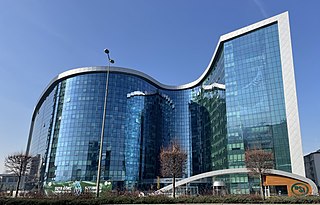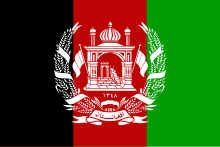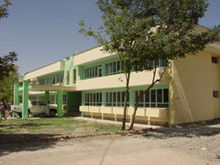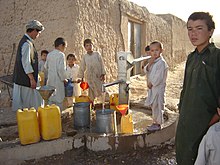Drinking water supply and sanitation in Ecuador is characterized by a number of achievements and challenges. One key achievement is a significant increase in both access to an at least basic water source and at least basic sanitation. Significant increases in coverage in urban areas were achieved both by the public utility EMAAP-Q, serving the capital Quito, and the private concessionaire Interagua in the country's largest city Guayaquil. However, municipalities rely overwhelmingly upon central government investment, rather than recouping the costs at a local level. Another problem is intermittent water supply, which affects half of the urban areas. Also, only 8% of all collected wastewater is being treated. The level of non-revenue water is estimated at 65%, one of the highest in Latin America. Addressing these challenges is complicated by the atomization of the sector: A multitude of stakeholders – the Ministry of Housing, the Emergency Social Investment Fund, the Solidarity Fund, the State Bank, NGOs, municipalities and others – intervene in the sector. Despite the existence of an Interinstitutional Committee for Water and Sanitation there remains room to improve coordination.
Drinking water supply and sanitation coverage in Honduras has increased significantly in the last decades. However, the sector is still characterized by poor service quality and poor efficiency in many places. Coverage gaps still remain, particularly in rural areas.
The water and sanitation sector in Peru has made important advances in the last two decades, including the increase of water coverage from 30% to 85% between 1980 and 2010. Sanitation coverage has also increased from 9% to 37% from 1985 to 2010 in rural areas. Advances have also been achieved concerning the disinfection of drinking water and in sewage treatment. Nevertheless, many challenges remain, such as:
Water supply and sanitation in Indonesia is characterized by poor levels of access and service quality. Almost 30 million people lack access to an improved water source and more than 70 million of the country's 264 million population has no access to improved sanitation. Only about 2% of people have access to sewerage in urban areas; this is one of the lowest in the world among middle-income countries. Water pollution is widespread on Bali and Java. Women in Jakarta report spending US$11 per month on boiling water, implying a significant burden for the poor.
In 2020, 97.7% of Indians had access to the basic water and sanitation facilities. India faces challenges ranging from sourcing water for its megacities to its distribution network which is intermittent in rural areas with continuous distribution networks just beginning to emerge. Non-revenue water is a challenge.

Access to water supply and sanitation in Ethiopia is amongst the lowest in Sub-Saharan Africa and the entire world. While access has increased substantially with funding from foreign aid, much still remains to be done. Some factors inhibiting the achievement of these goals are the limited capacity of water bureaus in the country's nine regions, two city administrations and water desks in the 770 districts of Ethiopia (woredas); insufficient cost recovery for proper operation and maintenance; and different policies and procedures used by various donors, notwithstanding the Paris Declaration on Aid Effectiveness.
Water supply and sanitation in China is undergoing a massive transition while facing numerous challenges such as rapid urbanization, increasing economic inequality, and the supply of water to rural areas. Water scarcity and pollution also impact access to water.
Water supply and sanitation in Yemen is characterized by many challenges as well as some achievements. A key challenge is severe water scarcity, especially in the Highlands, prompting The Times of London to write "Yemen could become the first nation to run out of water". A second key challenge is a high level of poverty, making it very difficult to recover the costs of service provision. Access to water supply sanitation in Yemen is as low or even lower than that in many sub-Saharan African countries. Yemen is both the poorest country and the most water-scarce country in the Arab world. Third, the capacity of sector institutions to plan, build, operate and maintain infrastructure remains limited. Last but not least the security situation makes it even more difficult to improve or even maintain existing levels of service.

Water supply and sanitation in Rwanda is characterized by a clear government policy and significant donor support. In response to poor sustainability of rural water systems and poor service quality, in 2002 local government in the Northern Byumba Province contracted out service provision to the local private sector in a form of public–private partnership. Support for public-private partnerships became a government policy in 2004 and locally initiated public-private partnerships spread rapidly, covering 25% of rural water systems as of 2007.
Drinking water supply and sanitation in Pakistan is characterized by some achievements and many challenges. In 2020, 68% Pakistanis, 72% Indians, 54% Bangladeshi had access to the basic sanitation facilities. Despite high population growth the country has increased the share of the population with access to an improved water source from 85% in 1990 to 92% in 2010, although this does not necessarily mean that the water from these sources is safe to drink. The share with access to improved sanitation increased from 27% to 38% during the same period, according to the Joint Monitoring Program for Water Supply and Sanitation. There has also been considerable innovation at the grass-root level, in particular concerning sanitation. The Orangi Pilot Project in Karachi and community-led total sanitation in rural areas are two examples of such innovation.

Water supply and sanitation in Zambia is characterized by achievements and challenges. Among the achievements are the creation of regional commercial utilities for urban areas to replace fragmented service provision by local governments; the establishment of a regulatory agency that has substantially improved the availability of information on service provision in urban areas; the establishment of a devolution trust fund to focus donor support on poor peri-urban areas; and an increase in the access to water supply in rural areas.

Tunisia has achieved the highest access rates to water supply and sanitation services among the Middle East and North Africa. As of 2011, access to safe drinking water became close to universal approaching 100% in urban areas and 90% in rural areas. Tunisia provides good quality drinking water throughout the year.
Drinking water supply and sanitation in Egypt directly impact the country's public health, industrial developments, and agriculture. Egypt's water and sanitation industry is characterized by both achievements and challenges. Among the achievements are an increase of piped water supply between 1998 and 2006 from 89% to 100% in urban areas and from 39% to 93% in rural areas despite rapid population growth; the elimination of open defecation in rural areas during the same period; and in general a relatively high level of investment in infrastructure. Access to an at least basic water source in Egypt is now practically universal with a rate of 98%. On the institutional side, the regulation and service provision have been separated to some extensions through the creation of a national Holding Company for Water and Wastewater in 2004, and of an economic regulator, the Egyptian Water Regulatory Agency (EWRA), in 2006. Despite these successes, many challenges remain. Only about one half of the population is connected to sanitary sewers. Because of this low sanitation coverage, about 50,000 children die each year because of diarrhea. Another challenge is low cost recovery due to water tariffs that are among the lowest in the world. This in turn requires government subsidies even for operating costs, a situation that has been aggravated by salary increases without tariff increases after the Arab Spring. Furthermore, poor operation of facilities, such as water and wastewater treatment plants, as well as limited government accountability and transparency, are also issues.

Water supply and sanitation in Morocco is provided by a wide array of utilities. They range from private companies in the largest city, Casablanca, the capital, Rabat, Tangier, and Tetouan, to public municipal utilities in 13 other cities, as well as a national electricity and water company (ONEE). The latter is in charge of bulk water supply to the aforementioned utilities, water distribution in about 500 small towns, as well as sewerage and wastewater treatment in 60 of these towns.

Water supply and sanitation in Tanzania is characterised by: decreasing access to at least basic water sources in the 2000s, steady access to some form of sanitation, intermittent water supply and generally low quality of service. Many utilities are barely able to cover their operation and maintenance costs through revenues due to low tariffs and poor efficiency. There are significant regional differences and the best performing utilities are Arusha and Tanga.

Water supply and sanitation in Kenya is characterised by low levels of access to water and sanitation, in particular in urban slums and in rural areas, as well as poor service quality in the form of intermittent water supply. Seasonal and regional water scarcity in Kenya exacerbates the difficulty to improve water supply.

Water supply and sanitation in Burkina Faso are characterized by high access to water supply in urban areas, while access to an at least basic water sources in rural areas – where three quarters of the population live – remains relatively low. An estimated one third of water facilities in rural areas are out of service because of a lack of maintenance. Access to at least basic sanitation lags significantly behind access to water supply.

Water supply and sanitation in Turkey is characterized by achievements and challenges. Over the past decades access to drinking water has become almost universal and access to adequate sanitation has also increased substantially. Autonomous utilities have been created in the 16 metropolitan cities of Turkey and cost recovery has been increased, thus providing the basis for the sustainability of service provision. Intermittent supply, which was common in many cities, has become less frequent. In 2004, 61% of the wastewater collected through sewers was being treated. In 2020 77% of water was used by agriculture, 10% by households and the rest by industry.

Water supply in Sierra Leone is characterized by limited access to safe drinking water. Despite efforts by the government and numerous non-governmental organizations, access has not much improved since the end of the Sierra Leone Civil War in 2002, stagnating at about 50% and even declining in rural areas. In the capital Freetown, taps often run dry. It is hoped that a new dam in Orugu, for which China committed financing in 2009, will alleviate water scarcity.

Responsibility of water supply in Nigeria is shared between three (3) levels of government – federal, state and local. The federal government is in charge of water resources management; state governments have the primary responsibility for urban water supply; and local governments together with communities are responsible for rural water supply. The responsibility for sanitation is not clearly defined.

















